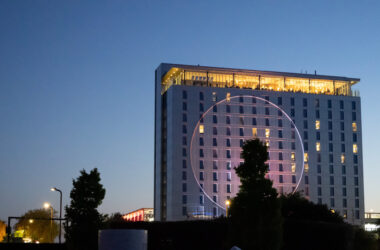A few people today messaged and mentioned me on twitter regarding the news that Abbott has requested the takedown of something related to their Libre 2. I gave a quick hot take on this on Twitter, but I guess it’s worth having something in long form to be referenced, since I’m sure this will be talked about a lot more, not least because of the ominous permalink chosen by Boing Boing (“they-literally-own-you”) and the fact that, game of telephone style, the news went from the original takedown, to Reddit phrasing it as “Abbott asserts copyright on your data”, which is both silly and untrue.
So let’s start with a bit of background, that most of the re-posters of this story probably don’t know much about. The Libre 2 is an upgrade on the FreeStyle Libre system that I wrote a lot about and that I use daily. It comes with both a reader device and with support in the LibreLink app for both Android and (on more recent iPhones) iOS. The main difference with the Libre system is that the sensors provide both NFC and BLE capabilities, with the ability to proactively notify of high- or low-blood sugar conditions, that the old NFC-only sensors cannot provide, which is more similar to CGM solutions like Dexcom‘s.
In both the Libre and Libre 2 systems, the sensors don’t report blood sugar values, like in most classic glucometers. Instead they report a number of “raw” values, including from a number of temperature sensors. There’s a great explanation of these from Pierre Vandevenne, here and here. To get a real blood sugar measurement, you need to apply some algorithm, that Abbott still refines. The algorithm is what I usually refer to as “secret sauce”, and is implemented in both the reader’s firmware and the LibreLink app itself.
Above I used the word “something” to refer to what was taken down. The reason why I say that is that Boing Boing in the title straight up calls this a “tool” — but when you read the linked post from the affected person, it is described as “details of how to patch the LibreLink app”. Since I have not seen what the repository was before it was taken down, I have no idea which one to believe exactly. In either case, it looks like Abbott does not like someone to effectively leverage their “secret sauce” to use in a different application, but in particular, it does not look like we’re talking about something like glucometerutils, that implemented the protocol “clean”, without derivation off the original software.
Indeed, Boing Boing seems to make a case that this is equivalent of implementing a file format: «[…] just because Apple’s Pages can read Word docs, it doesn’t mean that Pages is a derivative of MS Office.» Except that it’s not as clear cut. If you implemented support for one format by copying the implementation code into your software, that actually would make it a derivative work, quite obviously. In this case, if I am to believe the original report instead, the taken down content were instructions to modify Abbott’s app — and not a redistribution of it. Since I’m not a lawyer, I have no idea where that stands, but it’s clearly not as black-and-white as Boing Boing appears to make it.
As I said on twitter, this does not affect either of my projects, since neither is relying on the original software, and are rather descriptions of the protocols. They also don’t include any information or support for the Libre 2, since the protocol appears to have changed. There’s an open issue with discussion, but it also appears that this time Abbott is using some encryption on the protocol. And that might be an interesting problem, as someone might have to get up close and personal with the code to figure that part out — but if that’s the case, we’re back at needing a clean-room design for implementing it.
I also want to quote Pierre explicitly from the posts I linked above:
[…] in the Libre FRAM, what we are seeing is a real “raw” signal. While the measure of the glucose signal itself is fairly reliable, it is heavily post-processed by the Libre firmware. Specifically – and in no particular order – temperature compensation, delay compensation, de-noising… all play a role. That understanding and, to some extent, my MD training, led me to extreme caution and prevented me from releasing my “solution”, which I knew to be both incomplete and unable to handle some error conditions.
The main driver behind my decision was the well known “first do no harm” (primum non nocere) motto, an essential part of the Hippocratic Oath which I symbolically took. I still stick by it today. […]
[…]
Today, there are a lot of add-on devices that aim to transform the Libre into a full CGM. To be honest, in general, I do not like either the results they provide or their (in)convenience. None of those I have tried delivered results that would lead to an approval by a regulatory agency, none of them were stable for long periods of time. But, apparently, patients still feel they are helpful and there is now a thriving community that aims at improving them.
Pierre Vandevenne
While I have not sworn a Hippocratic Oath myself, I have similar concerns to Pierre, and I have explicitly avoided documenting the sensors’ protocol, and I won’t be merging code that tries to read them directly, even if provided.
And when it comes to copyright issues, I do weigh them fairly heavily: they are the fundamental way that Free Software even works, by respecting licenses. So I will prefer someone to provide me with the description of Abbott’s encryption protocol, rather than an implementation of it where I may be afraid of a “poisonous tree.”

